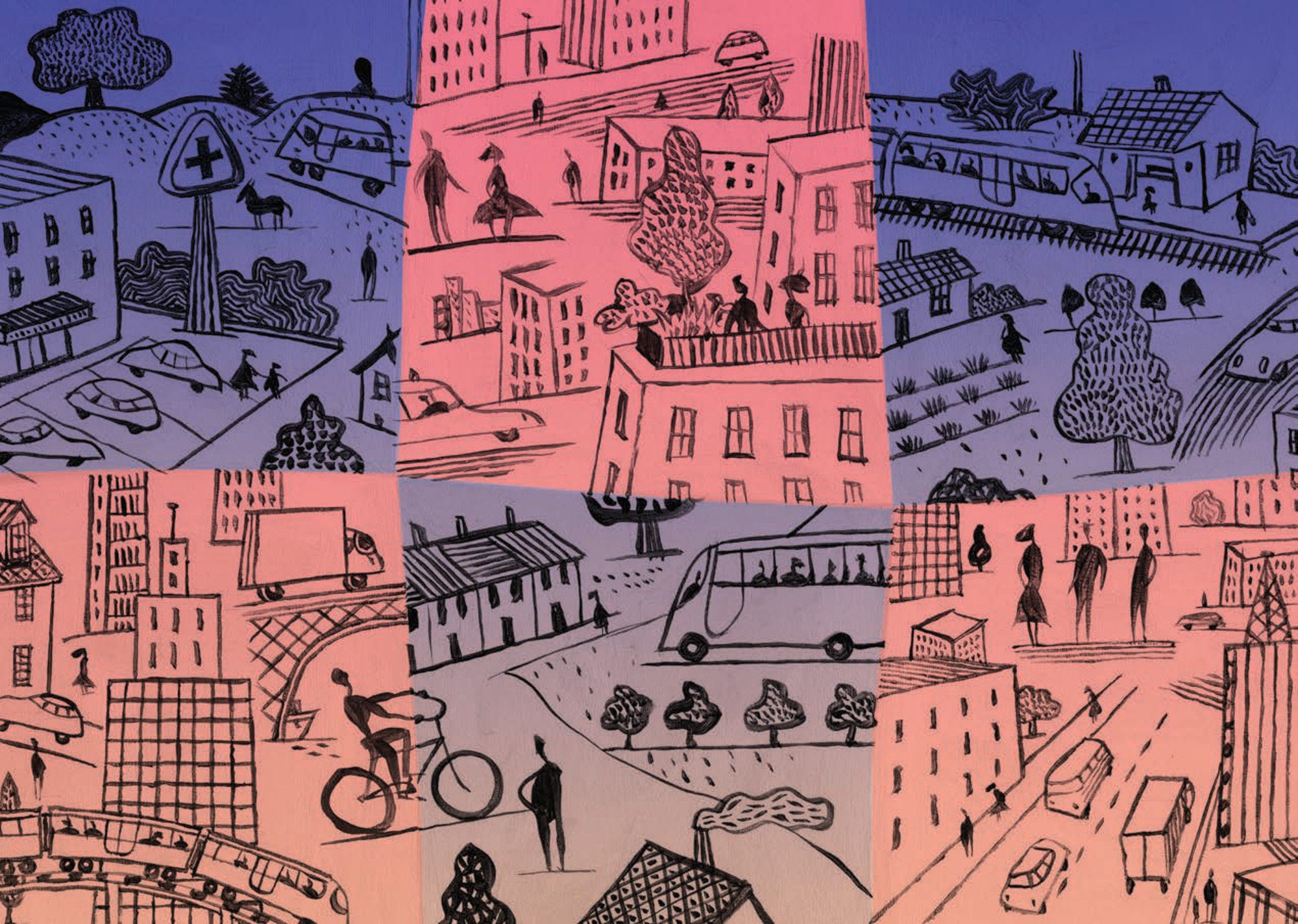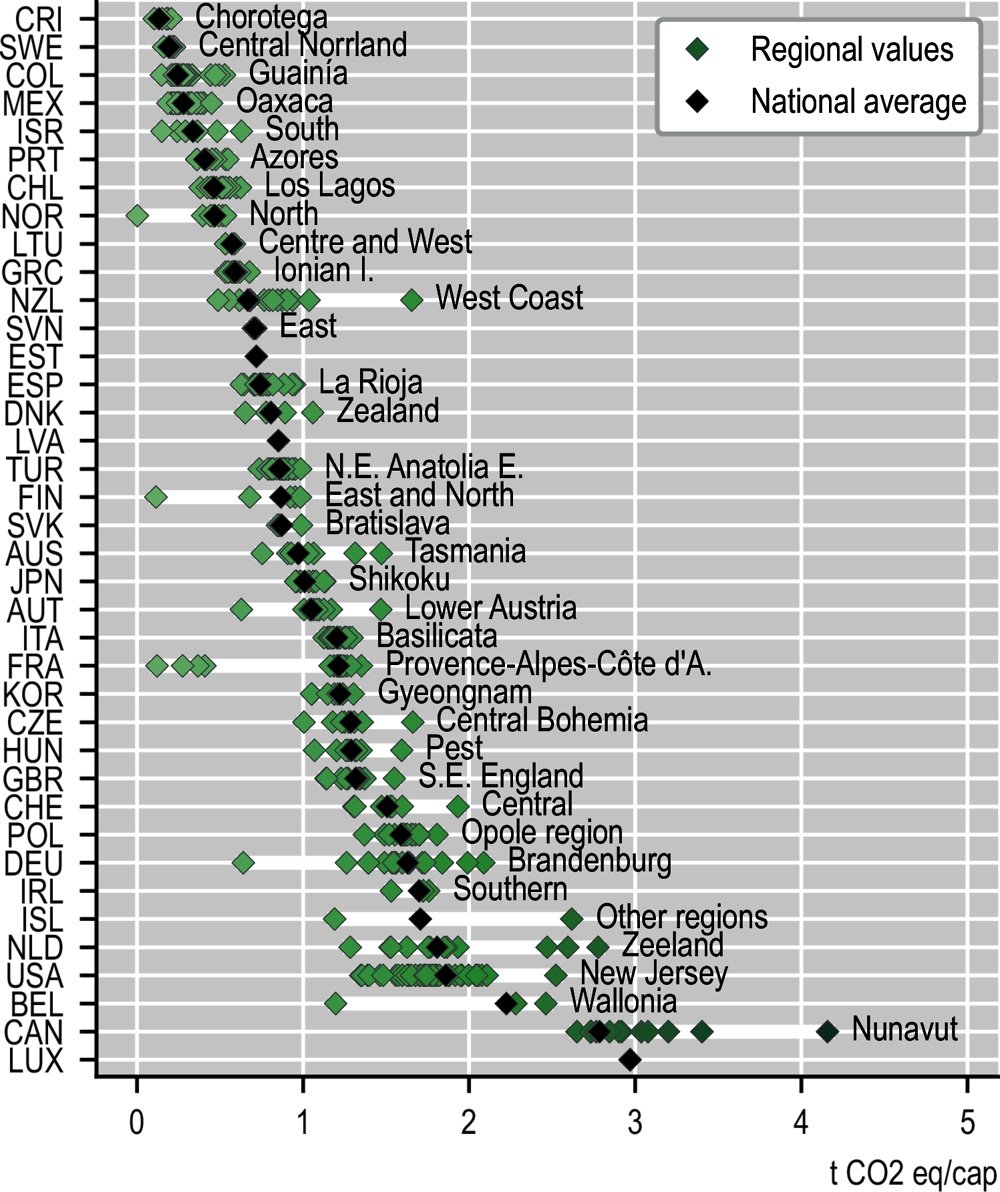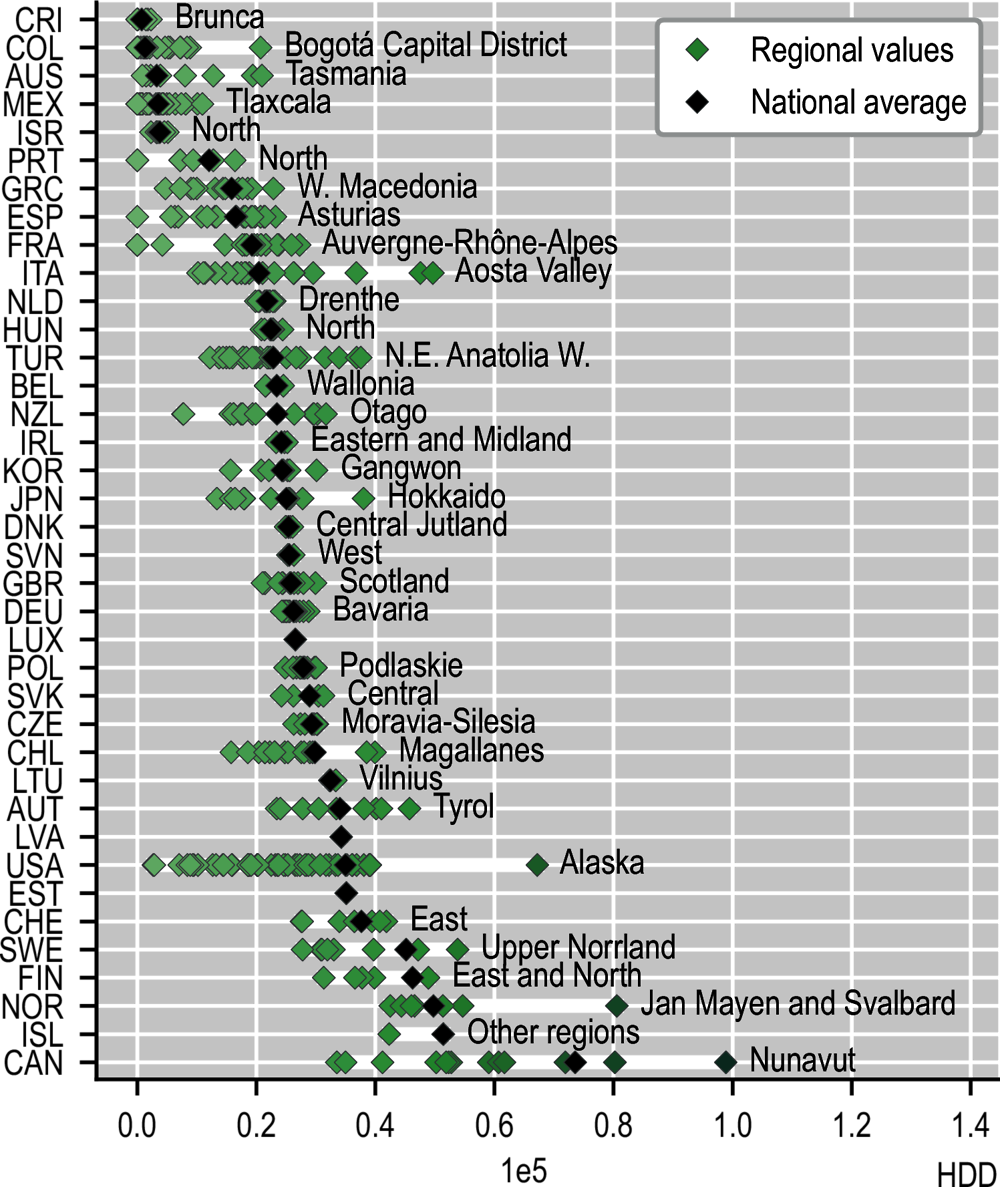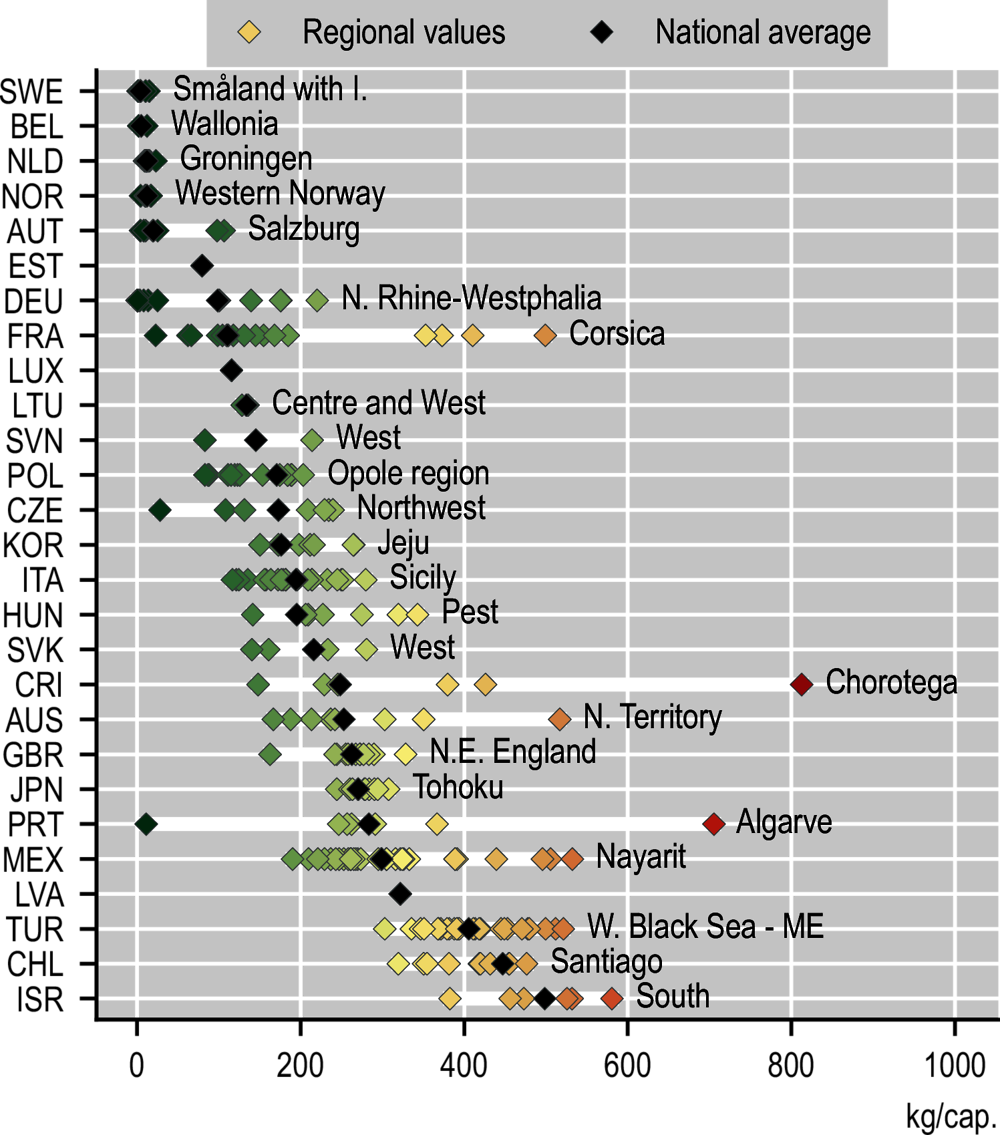In OECD regions, households have an important role to play to meet climate neutrality goals.
In OECD countries, direct building emissions (excluding purchased electricity and construction) accounted for 11% of GHG emissions in 2018 (Crippa et al., 2021). Direct building emissions have declined since 2000 (-11%) due to efficiency gains and despite the continuing growth in housing area per capita. However, buildings are still off track to achieve carbon neutrality by 2050 (IEA, 2022) and will have an important role to mitigate dependency on imported natural gas. Within countries, building emissions show differences that can only be partly explained by climate factors. For example, in Germany, building emissions per capita in Brandenburg are three times higher than in Bremen (Figure 2.10). Since 2000, building emissions per capita decreased in three-quarters of OECD large regions, with Swedish regions experiencing a decrease of more than 75%. However, not all OECD regions have seen declines, indeed many regions in the Baltic states, Colombia and Türkiye saw increases.
Space heating accounts for the largest share (64%) of energy consumption for European households (Eurostat, 2019) and natural gas is the leading energy source for space heating. By retrofitting their dwellings, households can play an important role in reducing both their energy consumption and dependencies on natural gas.
Heating degree days (HDD) provide a measure of weather-induced heating needs, albeit without accounting for building efficiency. In the US, heating needs in Florida are around 15 times lower than in Minnesota. Large disparities are also observed in smaller countries such as Italy, where the Aosta Valley region and the province of Bolzano-Bozen have at least four times more heating needs than Apulia, Sardinia and Sicily. Both Italy and the US are in the top 10 OECD countries in terms of natural gas consumption per capita in the residential sector. Rises in energy prices disproportionately impact low-income households. Indeed, in the UK – the country with the third-highest gas consumption per capita in the residential sector in Europe (IEA, 2022) – regions north of London tend to have both lower income and slightly higher heating needs (Figure 2.11).
In addition to energy consumption, households play an important role in lowering materials consumption, by reducing waste and increasing recycling. In 2018, waste accounted for 4% of domestic GHG emissions in OECD countries (Crippa et al., 2021). Large disparities in municipal waste generation per inhabitant exist across and within OECD countries. Israel and Luxembourg record on average almost three times the municipal waste per inhabitant observed in Colombia and regional disparities are particularly stark in Canada, Sweden and Latin American countries. In Mexico, for example, the average resident of Mexico City generates three times more waste than in Oaxaca (Figure 2.12). Over the past decade, most East European countries, as well as Colombia, Korea and Mexico have increased per capita waste. Recycling is still very limited in Türkiye and Latin America but very developed in many European countries, notably in Austria, Belgium, the Netherlands, Norway and Sweden, where close to 100% of municipal waste is recycled in most large regions. Capital regions often record the highest recycling rates within their respective countries, such as Australia, Belgium or France. Many European capital regions also show the largest decline in per capita waste in their respective countries (Figure 2.13).




